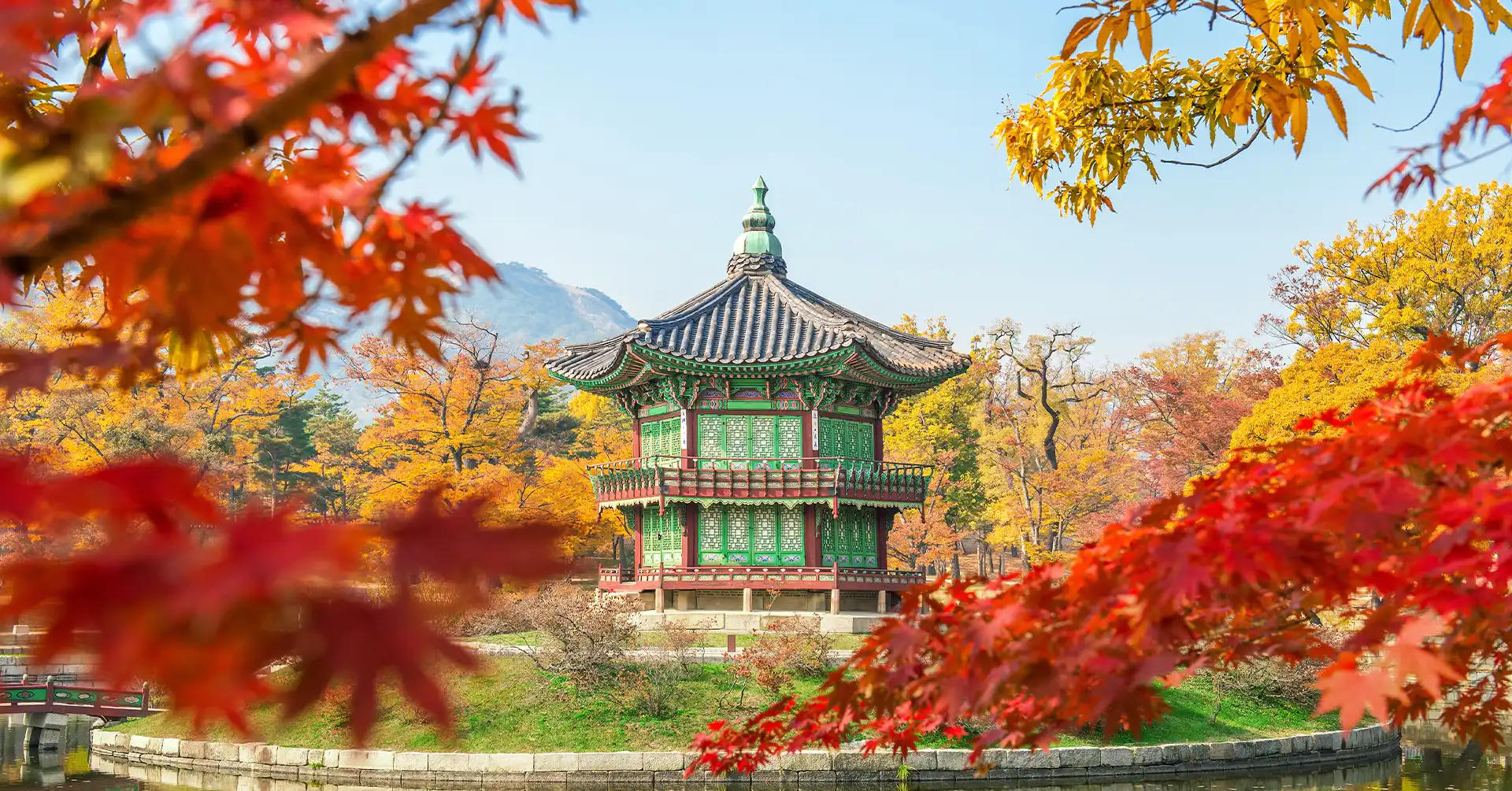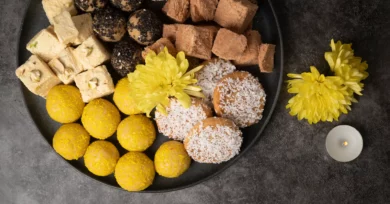The Culture of South Korea is a remarkable blend of centuries-old traditions and modernity. Delicious cuisine, vivid festivals, and unique customs make South Korean culture distinctive and appealing. South Korean culture—food, traditions, and more—will be explored in this blog.
Cuisine of South Korea
South Korean food is a vibrant and diverse tapestry of tastes that tantalize the taste senses and reveal the country’s heritage. The culture of South Korea revolves around it. Among Korea’s various delicacies, Kimchi represents the nation and its people.
Cultural importance and spicy taste characterize this fermented cabbage meal. Kimchi-making is a centuries-old technique that symbolizes family and tradition. Each typical Korean supper needs this spicy delight.
Kimchi is made of napa cabbage, Korean radishes, and a complex spice blend that needs precise preparation. These ingredients are piled and aged to create a balanced, delicious burst of Korean inventiveness and perseverance.
Bibimbap
Another culinary gem that symbolizes the Culture of South Korea is bibimbap, a lovely and vibrant rice dish that symbolizes balance and peace. A meal with vegetables, meats, and a spicy sauce is artistic. Combining these elements reflects South Korean culture and cuisine’s balance.
Bibimbap, with sautéed spinach, carrots, bean sprouts, and sliced beef or tofu, represents the country’s commitment to both. Gochujang, a spicy red pepper paste, is typically added to meals at the table to enhance taste.
Korean Barbecue
Korean BBQ is more than simply food—it’s a social event that represents Korean civilization. South Korean BBQ restaurants are communal places where customers prepare their meat. Sharing and talking during dinner helps individuals connect and fosters the sense that food is more than sustenance.
The Culture of South Korea is distinguished by the sizzling of meat on the grill, the seductive scent of marinated beef or pig, and the communal experience of cooking and eating. Korean culture values interpersonal interactions.
Festivals and Traditions
Seollal
During Seollal, the Korean Lunar New Year, the Culture of South Korea is very evident. Families around the nation play yutnori, celebrate their ancestors, and eat traditional meals. This celebration exemplifies Korean culture’s reverence for family and the past.
Charye ancestor ceremonies are highly cherished Seollal rituals. Families would host lavish feasts to honor their ancestors. The memorial ceremony emphasizes generational bonds and family customs.
Chuseok
Thanks for the harvest is expressed on South Korean Thanksgiving, Chuseok. Families gather to thank and enjoy the harvest. Traditional dishes like songpyeon (rice cakes) are made and eaten with family and friends during ancestral ceremonies.
Chuseok celebrates Korean ancestry and respects the past. Songpyeon is a notable Chuseok specialty. These delicate rice cakes may be filled with sesame seeds, honey, or beans in many forms and sizes. Family and friends cook songpyeon together.
Hanbok
Wearing the hanbok, South Korea’s national costume, is a gesture to honor and support the Culture of South Korea. This apparel is kept for weddings, christenings, and holidays. Complex patterns and brilliant colors emphasize the work’s beauty and cultural preservation.
Hanbok fashions have evolved with fashion trends while preserving elegance. The hanbok is still worn during traditional Korean ceremonies and celebrations to show the Korean people’s commitment to culture.
K-Pop and Pop Culture
K-pop music and Korean dramas have recently driven South Korean popular culture to worldwide renown. Due to this phenomenon, the Culture of South Korea enjoys a worldwide audience. K-pop artists’ captivating songs, charming performances, and Korean dramas’ emotionally moving stories have shown South Korean culture abroad.
With its catchy songs and captivating music videos, K-Pop has transcended language and culture. BTS and BLACKPINK are groups of worldwide renown and fans from diverse backgrounds. K-Pop fans, known as “K-Pop stans,” have helped promote South Korean music worldwide.
Korean dramas, or “K-Dramas,” have also captivated fans worldwide. These programs include science fiction, fantasy, romance, and historical epics. They provide entertainment and cultural exchange with their captivating narrative, complex characters, and high-quality production.
Korean Language and Writing
Language and writing are important to the Culture of South Korea. Clear and coherent, Korean, or “Hangeul,” is praised. King Sejong the Great and his scholars created it in the 15th century to encourage reading in Korea. With 14 consonants and 10 vowels, Hangeul is easy to learn and use.
South Korean Hangeul’s development shows a commitment to reading and comprehension. Maintaining linguistic heritage while adapting is also stressed. Korean lettering is a powerful symbol of national and cultural pride.
Tea Culture and Etiquette
South Korean tea drinking, or “Darye,” is rooted in meditation and tradition. Green, herbal, and black tea are popular Korean drinks because they relax people. Artistic teamaking and sipping encourage reflection and tranquillity.
Tight protocols govern South Korean tea rituals. Participants watch the water temperature, tea leaf freshness, and brewing time. The Culture of South Korea encourages mutual respect and being present now; therefore, sharing tea symbolizes these qualities.
Architecture and Hanok
Historic structures show South Korea’s cultural riches. Hanoks shows how traditional Korean building connects with nature. Traditional Hanoks are wooden houses with tiled roofs that face cross winds and sunlight.
Visit a traditional Korean residence, or hanok, to experience Korean culture and traditions from the past. Due to their historical and architectural value, hanoks are often preserved as museums or cultural heritage sites.
Innovations in Technology and Modernity
South Korea appreciates tradition yet leads in technology and the 21st century. The country’s quick economic expansion, known as the “Miracle on the Han River,” has put it at the forefront of world technology.
South Korea’s Samsung, LG, and Hyundai have pioneered several electronics, automotive, and other technologies. Seoul contrasts history and technology with ancient palaces and modern skyscrapers on its bustling streets.
Literature and Arts
South Korea has a centuries-old literary tradition. Traditional literature like “The Tale of Chunhyang” and “The Story of Hong Gildong” may illuminate the country’s cultural standards and values. South Koreans may feel more connected to their history by studying and praising these literary masterpieces.
Modern South Korean literature is a classic. Han Kang and Hwang Sok-yong have won literary awards and had their works translated into several languages, introducing South Korean literature to new audiences worldwide.
South Korea has also contributed to visual arts. Traditional Korean painting shows nature or spirituality using ink and brush. Numerous artistic trends and traditions influence South Korean contemporary artists. Traditional and contemporary art galleries and exhibits in Seoul foster creativity and cultural exchange.
Sports and Martial Arts
South Korean sports emphasize tradition and discipline. Due to its focus on fitness, mental toughness, and self-defense, Taekwondo and Hapkido are popular worldwide. Korea values discipline and dignity, and its martial arts reflect that.
South Korean athletes have excelled in taekwondo, archery, and short-track speed skating. The nation’s athletes have a lengthy Olympic record. South Koreans work hard and are dedicated, as seen by their triumph.
Environmental Stewardship
Sustainable development and environmental conservation are strongly rooted in South Korean culture. Environmental awareness and conservation have improved throughout the nation. South Korean towns promote a greener future through green spaces, renewable energy, and eco-friendly transportation.
The Culture of South Korea values harmony with the environment and a feeling of responsibility to conserve it for future generations. The government’s initiatives to reduce pollution, maintain animal habitats, and promote green technologies show its dedication to the past and future.
Cultural Diplomacy
South Korea’s cultural influence has extended globally via cultural diplomacy. “Hallyu,” short for “Korean Wave,” describes K-Pop, Korean dramas, and Korean food’s global appeal. Today, South Korean performers and artists promote their country’s art and music to new audiences and help people understand and appreciate it.
South Korean media’s beliefs and traditions have been adopted by fans worldwide, making Korean pop culture popular. South Korean cultural accomplishments are highlighted in this diplomatic push.
Global Impact and Connection
South Korean popular culture has united people from different backgrounds. K-pop and Korean dramas have made South Korea a cultural powerhouse. This global reach has promoted cultural interchange, respect, and cooperation among nations.
K-Pop has created a global fanbase with its catchy songs and captivating live productions. The “K-Pop fandom,” or ardent support from fans worldwide, has created a sense of unity and togetherness that transcends national lines and shows how the Culture of South Korea can inspire and connect people.
Invitation to Explore
South Korea offers more than a vacation—it’s a chance to see old cultures and modern technology. Taste centuries-old dishes and enjoy current innovations. It’s a chance to experience South Korean culture’s unparalleled respect for heritage and optimism for the future.
As you study the Culture of South Korea, you are welcomed into a world of rituals, festivals, and values that touch the human soul. Learn about a civilization that welcomes tourists and fosters global partnerships.
Conclusion
The Culture of South Korea is a rich fabric of old rituals, modern inventions, and global influences. Korean culture fascinates people worldwide, from its complicated cuisine to its beautiful hanbok. This civilization appreciates its past yet looks forward to the future.
South Korea’s ability to blend tradition with progress makes it durable and adaptive. Experience the Culture of South Korea and learn about its rich history, lively present, and bright future. People of various backgrounds cherish South Korea’s rich cultural legacy since history and modernity coexist.
Also Read:
East Asia Cultural Traditions, Foods, and Etiquette
Dominate the Music Industry with Effective Marketing Strategies






